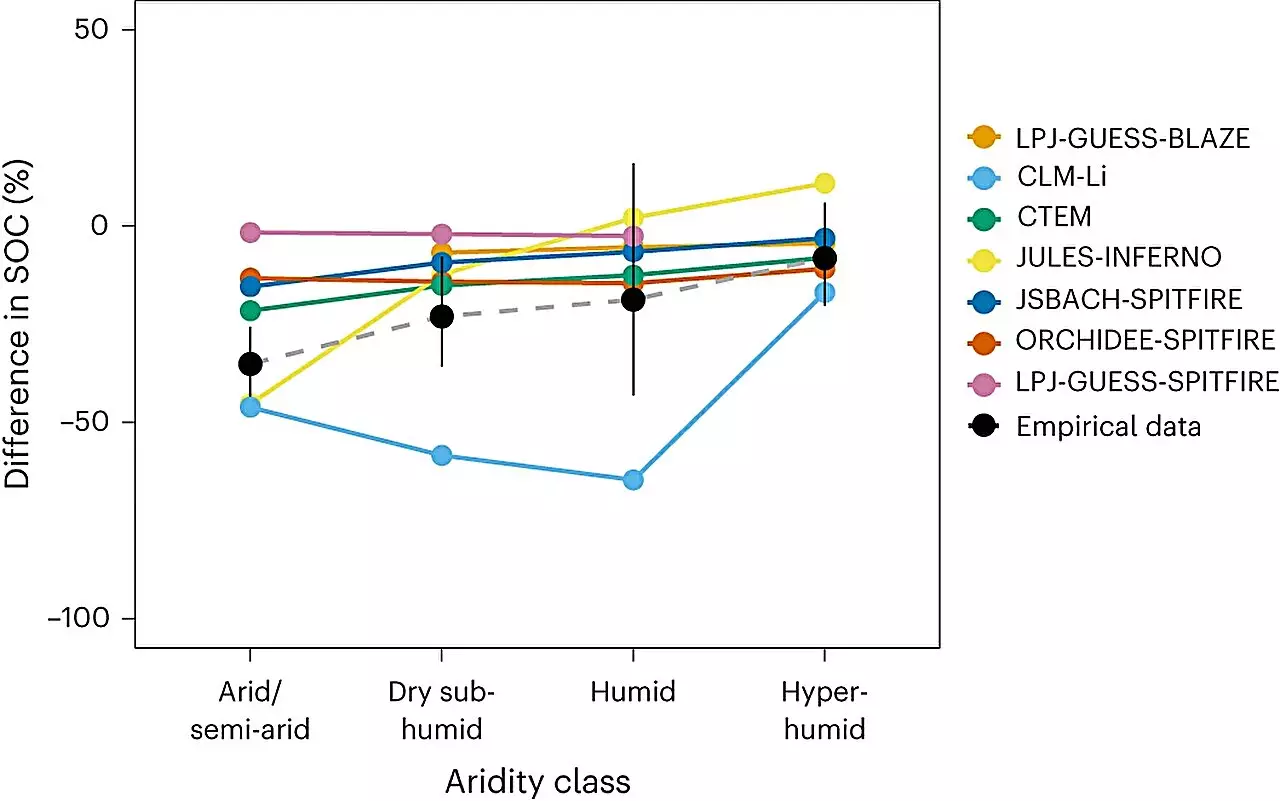

A groundbreaking study published in Nature Climate Change has revealed that savannas and grasslands in drier climates have a significantly greater capacity to store carbon and contribute to the reduction of climate warming than previously believed. The research draws on an extensive analysis of fire-manipulation experiments from around the world, coupled with field-sampling campaigns. Led by Adam Pellegrini, an IGCB Exchange Professor at the University of Michigan, the study highlights the vulnerability of drier ecosystems in response to changes in wildfire frequency.
The study opens up crucial perspectives on the impact of fire suppression caused by the expansion of human settlements, landscapes fragmentation, and the subsequent decrease in wildfires. In drier savannas and grasslands, the reduction in the frequency and size of fires has led to an unexpected 23% increase in topsoil carbon storage. Astonishingly, state-of-the-art ecosystem models employed by climate researchers have failed to predict this phenomenon, signifying that the climate-buffering impact of dryland savannas has been consistently underestimated.
According to the study, savanna-grassland regions across the world have accumulated an estimated 640 million metric tons of carbon in their soils over the past two decades. The decline in fire frequency has contributed notably to this carbon sink, with the stored carbon helping to counteract climate warming. However, it is essential to acknowledge that this positive trend might not continue indefinitely, emphasizing the need for sustainable land management and fire management practices.
Savannas are unique ecosystems found in tropical and subtropical regions, such as eastern Africa and northern South America. Characterized by grasslands and scattered trees, they possess remarkable resilience to drought. The study encompasses changes in burned areas and fire frequencies in savannas, grasslands, seasonal woodlands, and forests. It includes an analysis of 888,000 square miles of dryland savanna-grasslands, where reductions in fire frequency and burned areas have increased soil carbon by 23%. However, in more humid regions covering 533,000 square miles, the increased frequency of wildfires has led to a 25% loss in soil carbon.
While the overall increase in soil carbon may not seem substantial, it is a remarkable feat considering the scale of global emissions. Pellegrini notes that this achievement should not be disregarded, despite not being a significant dent in anthropogenic emissions. Savannas and grasslands play an essential role in the carbon cycle, making a valuable contribution to mitigating climate change.
The study sheds light on the underestimated potential of savannas and grasslands in combating climate change. Their ability to store carbon, especially in dryland regions where fire frequencies have declined, demonstrates their resilience and importance in the global carbon balance. However, it is essential to recognize that this trend may not persist indefinitely, underscoring the importance of sustainable land management practices and the need for continued research in understanding the intricate workings of these ecosystems. Savannas and grasslands have proven to be unsung heroes in the fight against climate change, and their preservation and conservation must be prioritized for a sustainable future.
The battle against antimicrobial resistance (AMR) has become one of the paramount public health challenges…
In our relentless pursuit of healthier lifestyles, the craze for sugar alternatives has become a…
As climate change continues to wreak havoc globally, Africa's vulnerability makes it imperative for nations…
The realm of quantum technology has long been hailed as the next frontier in scientific…
The fascination surrounding black holes often breeds misconceptions, particularly the idea that they obliterate not…
In a groundbreaking endeavor, researchers at Trinity College Dublin have merged the worlds of chemistry…
This website uses cookies.